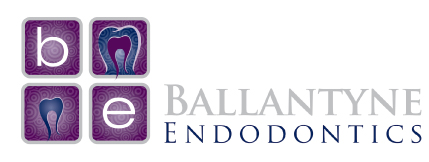What Can I Eat After A Root Canal?
Key Takeaways:
Early Post-Treatment Care:
Immediately after a root canal, your mouth will likely be numb from anesthesia. It’s crucial to avoid biting your cheek or tongue accidentally.
Recommended Foods:
During recovery, focus on soft, nutritious foods that won’t irritate your mouth or cause discomfort. Examples include scrambled eggs, yogurt with soft fruit, mashed potatoes, lukewarm soup, and cooked vegetables.
Long-Term Considerations:
Beyond just what to eat, how you eat is important for a smooth recovery. Chew on the opposite side of your mouth from the treated area, take small bites, and eat slowly.
If a root canal is in your near future, you probably have questions about what to expect. No doubt you are eager to move on with your life without the pain that led to you needing a root canal in the first place.
You can set yourself up for a smooth and successful recovery by planning to give yourself a suitable environment for healing after the treatment. Eating is a part of daily life, and food is actually a big part of healing, so you might have questions like, “What can I eat after a root canal?” We hope this article makes it easier for you to plan for a smooth recovery.
This article is not a substitute for medical advice; it is provided for information purposes only.
One step in planning for your post-operative experience is to stock up on the best foods to eat while you recover from your root canal. To start, it may help to consider why you might need to change your usual diet temporarily.
Why You May Need to Change Your Routine
Starting from the moment you leave your endodontist’s office, your mouth will be temporarily numb. Once the local anesthetic wears off, you may notice pain.
If you are hungry, you can eat as early as half an hour after a root canal, but most people want to wait until after the anesthetic wears off. If you eat sooner, be cautious; you might bite your cheek or tongue and not notice. It’s best to choose foods that don’t require chewing if your anesthetic hasn’t completely worn off yet—a smoothie can be a great choice.
Your endodontist likely already gave you recommendations for pain management while you heal, but you will want to choose food that supports your natural healing process and won’t worsen the pain.
Initially, you will feel mild tenderness in your jaw and around the tooth. Chewing may be more painful than usual. Try eating soft foods that don’t require too much chewing or putting unnecessary pressure on the tooth.
The American Association of Endodontists recommends you seek additional care if you experience these symptoms when eating or in general:
- Severe pressure and pain for days
- Rash, hives, or itching since these are signs of a possible allergy
- When you chew, your bite feels uneven
- Visible swelling or infection
- Fever
- You feel no relief from the symptoms that you had before the root canal
While these symptoms are not directly related to diet, we mention them because many people become more aware of their oral health concerns and pain while eating and drinking.
What Can You Eat After Root Canal?
Here are a few ideas if you need guidelines covering specific things you can eat after a root canal. Use the following suggestions more as guidelines than an absolute list, and feel free to tailor them to your dietary needs, allergies, cultural preferences, and taste. Be sure to consider the list of the types of food to avoid.
Foods to Eat After a Root Canal Procedure
Eat soft foods that are reasonably nutritious. Look for foods that don’t contain ingredients that might irritate your mouth, such as strong spices and other foods that cause sensations in your mouth, like tingling or heat. Also, avoid extreme temperatures since hot or very cold foods might intensify the pain.
For breakfast, you can try the following:
- Scrambled eggs
- Yogurt, possibly with soft fruit
- Smoothie bowls
- Avocado on soft toast or eggs
- Soft tofu scramble
- Cooked mushrooms or other soft vegetables, just go easy on seasonings
Lunch or dinner options:
- Mashed potatoes, sweet potatoes, or cauliflower mash
- Meatloaf
- Pasta, quinoa, polenta, white rice, or couscous
- Beans—though, this probably isn’t the right time for spicy chili beans
- Cooked vegetables, possibly softer than you usually prefer
- Lukewarm soup
- Puréed cooked vegetables, hummus, non-spicy bean dip
- Sandwiches—but avoid hard, sticky, or crunchy fillings
Snack options:
- Cooked or soft canned fruit
- Soft cheese
- Soft bread
- Yogurt
- Smoothie or protein shake
- Cottage cheese
- Mashed bananas or avocado
- Applesauce
Foods to Avoid After a Root Canal
While healing, there are some foods you may want to avoid. These include sticky foods that are hard to chew and that might remove a temporary filling or crown.
Very hot or cold foods may irritate your healing gums, skin, and soft tissues. Also, avoid spicy foods like chili peppers, wasabi, or others that may irritate your already inflamed skin.
You should avoid eating hard candies while you heal, as well.
Keep in mind that, initially, you may need to temporarily adapt your oral hygiene routine, so it can be a good idea to avoid foods that easily get stuck between your teeth, like popcorn. Crunchy snacks like nuts and pretzels are also best left for later.
It may be more comfortable for you to avoid acidic foods and beverages, including coffee, white wine, tomato sauce, soda, citrus fruit, and vinegar. Some of these may be good for your overall health, but they pose extra oral health challenges.
Avoid alcohol while you heal; not only are most beverages containing alcohol acidic, but alcohol itself is a blood thinner, which can complicate and slow down your healing process. Additionally, it may interact with pain medications your provider has suggested you take.
Be Mindful of How You Eat, Not Just What You Eat
Nourishing yourself is an important part of your root canal aftercare. While some foods are recommended and others are discouraged, all of these suggestions exist to support your recovery and avoid injury while you heal. It’s important to also pay attention to how you are eating, so try these tips to make eating more comfortable and pleasant during your recovery process.
When you choose your first meal after your root canal, keep these basic guidelines in mind:
- Eat soft foods that are easy to chew and swallow.
- Chew on the other side of the mouth; avoid direct pressure on the affected tooth and treated area.
- Take small bites
- Eat slowly with awareness.
- Avoid hot foods and drinks.
- Gently rinse your mouth with warm water and salt after eating.
- Follow your endodontist’s guidelines on when to resume your normal oral hygiene routine of brushing and flossing your teeth.
If you have other questions about how to best prepare for a root canal, talk with your endodontist. The team at Ballantyne Endodontics proudly serves people in and near Charlotte, NC. We strive to save natural teeth through root canals and other restorative dental care. Contact us today if you live in the area and need a root canal.

